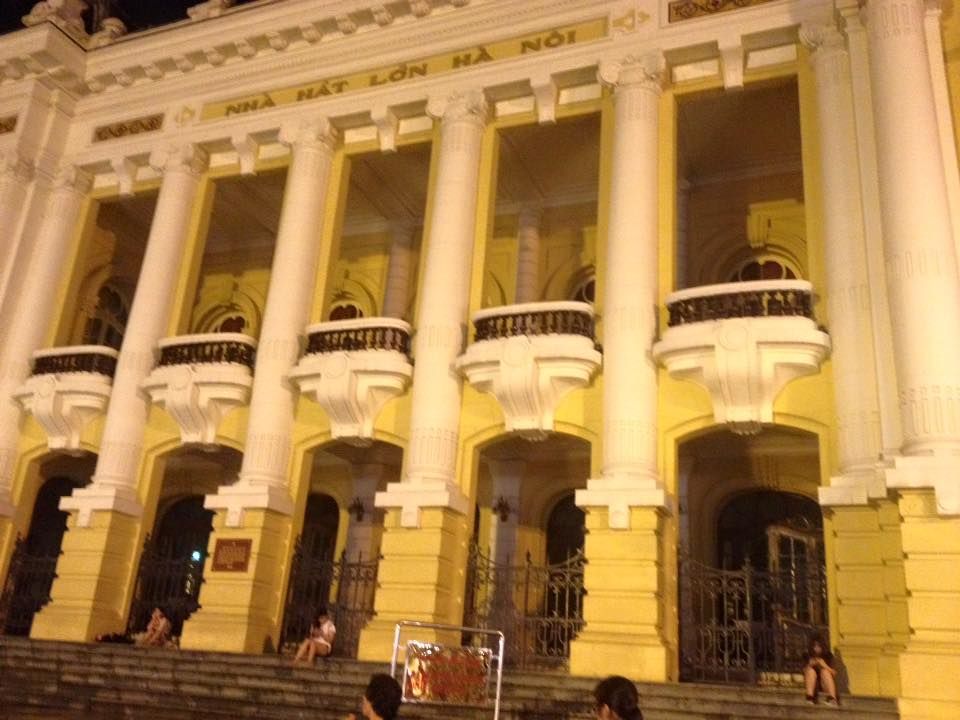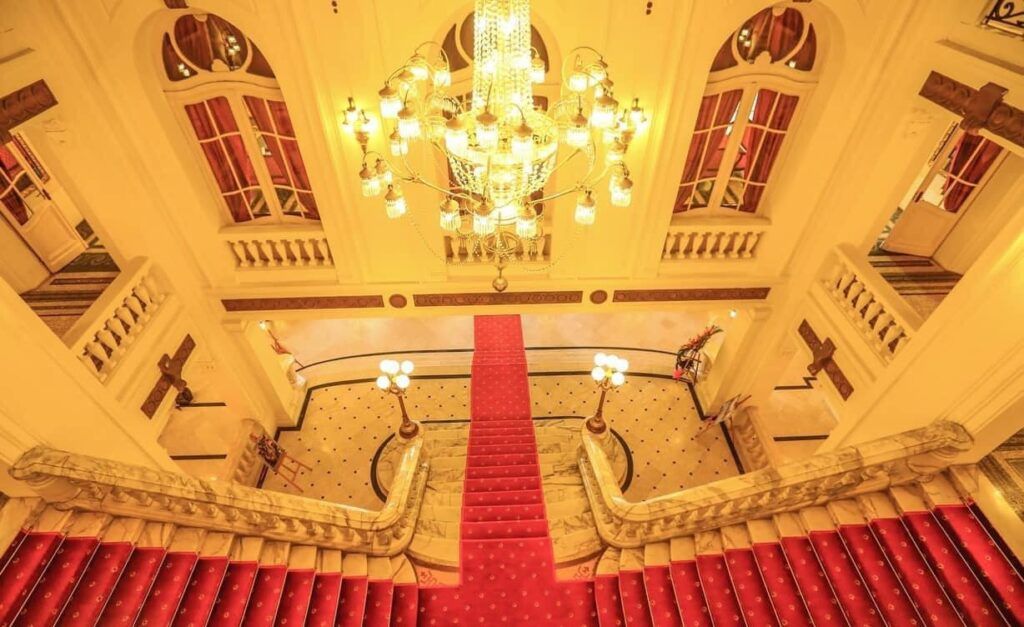Nestled amidst the bustling heart of Hanoi, Vietnam, the Hanoi Opera House (Nhà hát Lớn Hà Nội) stands as a majestic testament to the city’s rich history and vibrant cultural scene. Built between 1901 and 1911 by the French colonial administration, this architectural marvel is a captivating blend of Western neoclassical design and subtle Vietnamese influences. Today, it serves as a premier venue for opera, ballet, and traditional Vietnamese performances, and is a significant landmark for travelers seeking a glimpse into Hanoi’s multifaceted heritage.

Unveiling the Hanoi Opera House’s History
The story of the Hanoi Opera House began in the late 19th century when French colonial authorities envisioned a cultural hub reflecting the grandeur of European opera houses. Inspired by the famed Palais Garnier in Paris, architects Harlay and Broyer meticulously crafted the design. However, to adapt to the local climate and resources, they employed a smaller scale and readily available materials like brick and stucco.

Following its inauguration in 1911, the Hanoi Opera House became the center of Hanoi’s thriving social scene. Elegant soirees, lavish performances by renowned French artists, and exclusive gatherings of the colonial elite filled its halls. However, Vietnam’s independence in 1945, witnessed pivotal political events, from housing the first session of the National Assembly to becoming a backdrop for the fight for Hanoi during the Vietnam War. This transformation reflects the opera house’s enduring significance as a stage not just for artistic expression but also for Vietnam’s national narrative.
A Walk Through Time: Exploring the Hanoi Opera House Architectural Marvel
Standing proudly at the heart of Hanoi’s French Quarter, Hanoi Opera House commands attention with its imposing facade. Featuring a symmetrical layout and a grand entrance flanked by Doric columns, it evokes a sense of grandeur reminiscent of ancient Greek temples. The intricate details, from the sculpted bas-reliefs depicting scenes from mythology to the ornately decorated pediment, speak volumes about the artistry invested in its creation.
Stepping inside, one is transported to a bygone era. The grand foyer, adorned with polished marble floors, sweeping staircases, and crystal chandeliers, sets the stage for an unforgettable experience.

The horseshoe-shaped auditorium, modeled after European opera houses, boasts a tiered seating arrangement, plush red velvet upholstery, and a beautifully painted ceiling.

The exquisite detailing, from the gilded balconies to the intricately carved moldings, reflects meticulous attention to detail and creates an atmosphere of sophistication.

A Stage for All: Experiencing the Cultural Tapestry of Hanoi at Hanoi Opera House
While specific showtimes can be subject to change, the Hanoi Opera House typically features a dynamic performance calendar.

To get a sense of the variety, here are some potential categories you might encounter:
Opera: Experience the grandeur of operatic masterpieces, both classic and contemporary
Ballet: Be captivated by the grace and athleticism of world-class ballet productions
Music: Immerse yourself in the sounds of classical, traditional Vietnamese, or even contemporary music concerts
Dance: Witness the beauty and power of modern dance productions alongside Vietnamese folk dances
Planning Your Visit to Hanoi Opera House
To make the most of your experience at the Hanoi Opera House, consider these tips
Check the official website or social media pages for the latest performance schedule and ticketing information Link
Book tickets in advance, especially for popular shows
Dress appropriately for the occasion. While formal attire isn’t mandatory, most opt for smart casual wear
Guided Tours: Consider joining a guided tour of the opera house to gain insights into its history, architecture, and significance in Vietnamese culture.
Address: 01 Tràng Tiền – Hoàn Kiếm District – Ha Noi, Ho Chi Minh (You can easily come to Hanoi Opera House, either by self drive, or using ride hailing app)

